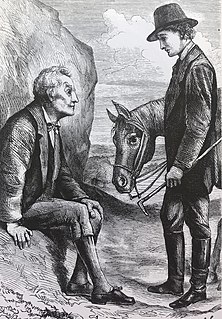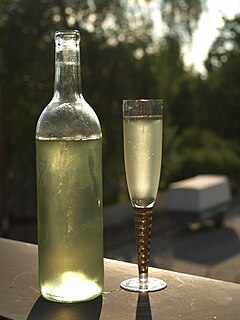 W
WWelsh cuisine encompasses the cooking styles, traditions and recipes associated with Wales. While there are many dishes that can be considered Welsh due to their ingredients and/or history, dishes such as cawl, Welsh rarebit, laverbread, Welsh cakes, bara brith and Glamorgan sausage have all been regarded as symbols of Welsh food. Some variation in dishes exists across the country, with notable differences existing in the Gower Peninsula, a historically isolated rural area which developed self-sufficiency in food production.
 W
WBara brith is a traditional Welsh tea bread flavoured with tea, dried fruits and spices.
 W
WKnown as The Garden of Wales, Carmarthenshire is a county of rich, fertile farmland and productive seas and estuaries, that give it a range of foods that motivate many home cooks and restaurateurs. There is a local tradition in brewing, milling, gathering shellfish from the coasts and meat production. Carmarthenshire has been described by The Daily Telegraph as a "worthwhile destination for foodies" with the county having a modest matter of fact excellence. Carmarthenshire has ambitions to become the premier food-producing county of Wales, based on its strong reputation for first-class products. and Carmarthenshire County Council produces its own on-line and hard-copy recipe book called Taste from Carmarthenshire, for those interested in learning more about the county's cuisine.
 W
WCaroline Street is a pedestrianised street running east/west in the lower part of Cardiff city centre, located between The Hayes and St. Mary's Street. It is known locally as Chippy Lane due to the density of fast food shops along the street.
 W
WCawl is a Welsh dish. In modern Welsh the word is used for any soup or broth; in English it refers to a traditional Welsh soup, usually called cawl Cymreig in Welsh. Historically, ingredients tended to vary, but the most common recipes are with lamb or beef with leeks, potatoes, swedes, carrots and other seasonal vegetables. Cawl is recognised as a national dish of Wales.
 W
WClark's Pies, also colloquially nicknamed "Clarkies" or "Clarksies," are well-known meat pies that originated in Cardiff, and can now be found in Bristol and the South of Wales.
 W
WA cockle is an edible, marine bivalve mollusc. Although many small edible bivalves are loosely called cockles, true cockles are species in the family Cardiidae. True cockles live in sandy, sheltered beaches throughout the world. The distinctive rounded shells are bilaterally symmetrical, and are heart-shaped when viewed from the end. Numerous radial, evenly spaced ribs are a feature of the shell in most but not all genera.
 W
WCrempog is a Welsh pancake made with flour, buttermilk, eggs, vinegar and salted butter. Traditionally made on bakestones or griddles, crempog is one of the oldest recipes in Wales. They are also known as ffroes, pancos and cramoth and are normally served thickly piled into a stack and spread with butter. It is traditionally served at celebrations in Wales, such as Shrove Tuesday and birthdays.
 W
WThe cuisine of Monmouthshire is historically associated with Lady Augusta Hall, who was also known as Lady Llanover. Lady Llanover published one of the first Welsh cookery books called First Principles of Good Cookery. The book uses a fictional Welsh hermit to give culinary advice to a visiting guest who is travelling though Wales.
 W
WPembrokeshire has been called "the cottage garden of Wales", due to its good soil and the beneficial effects of the Gulf Stream, which provide a mild climate and a longer growing season than other parts of the country. The good climate and soil meant that the south of the peninsula was coveted by the Norsemen and Normans because it had "great plentie" of corn and cattle The county has prime agricultural land, much of which is located at about 70m above sea level, while to the north, the Preseli Hills rise to 500m above sea level and form uplands that are made up of heather and bracken, which are used for grazing sheep. Consequently, Pembrokeshire is classed as one of the most fertile counties in Wales, with its 392,300 agricultural acres having 14% of its land classed as of good quality, 67% being classed as medium quality and 19% being classed as poor quality. However, agricultural production is subject to market forces and in the 1890s, as a result of the Panic of 1893, a deep agricultural depression led to the area under cultivation falling by a third. Many labourers and farmers had no option but to emigrate to the New World and many of the large farming estates were sold. World War I brought prosperity again, but by the 1930s, as a result of the Great Depression, there was another agricultural depression which lasted until World War II. During the Post-war period agriculture has benefited from marketing schemes and marketing boards, which have helped in the regulation, marketing and distribution of the county's agricultural production.
 W
WFaggots are meatballs made from minced off-cuts and offal, especially pork together with herbs for flavouring and sometimes added bread crumbs. It is a traditional dish in the United Kingdom, especially South and Mid Wales and the English Midlands.
 W
WGlamorgan sausage is a traditional Welsh vegetarian sausage for which the main ingredients are cheese, leeks and breadcrumbs. It is named after the historic county of Glamorgan in Wales.
 W
WLaverbread is a food product made from laver, an edible seaweed consumed mainly in Wales as part of local traditional cuisine. The seaweed is commonly found around the west coast of Great Britain, and the coasts of Ireland where it is known as sleabhac. It is smooth in texture and forms delicate, sheetlike thalli, often clinging to rocks. The principal variety is Porphyra umbilicalis. Porphyra is classified as red algae; it tends to be a brownish colour, but boils down to a dark green pulp when prepared. Laver seaweed has a high content of dietary minerals, particularly iodine and iron. The high iodine content gives the seaweed a distinctive flavour in common with olives and oysters.
 W
WThe leek is a vegetable, a cultivar of Allium ampeloprasum, the broadleaf wild leek. The edible part of the plant is a bundle of leaf sheaths that is sometimes erroneously called a stem or stalk. The genus Allium also contains the onion, garlic, shallot, scallion, chive, and Chinese onion. Three closely related vegetables, elephant garlic, kurrat and Persian leek or tareh, are also cultivars of A. ampeloprasum, although different in their uses as food.
 W
WLeek soup is a soup based on potatoes, leeks, broth, and heavy cream. Other ingredients used may be salt, pepper, and various spices.
 W
WMead is an alcoholic beverage created by fermenting honey with water, sometimes with various fruits, spices, grains, or hops. The alcoholic content ranges from about 3.5% ABV to more than 18%. The defining characteristic of mead is that the majority of the beverage's fermentable sugar is derived from honey. It may be still, carbonated, or naturally sparkling; dry, semi-sweet, or sweet.
 W
WSpiced beef is a form of salt beef, cured with spices and braised or boiled. It is a traditional festive dish in many countries. In England and Wales it has been known for more than three hundred years, but is known to have originated from Co. Cork, Ireland. It remains a traditional Christmas or New Year dish in Ireland, in particular Cork.
 W
WTatws Pum Munud [ˈtatʊs pɨ̞m ˈmɨːnɨ̞d] is a traditional Welsh stew, made with smoked bacon, stock, potatoes and other vegetables.
 W
WWelsh cakes, also bakestones or pics, are a traditional sweet bread in Wales. They have been popular since the late 19th century with the addition of fat, sugar and dried fruit to a longer standing recipe for flat-bread baked on a griddle.
 W
WWelsh rarebit or Welsh rabbit is a British dish consisting of a hot cheese-based sauce served over slices of toasted bread. The original 18th-century name of the dish was the jocular "Welsh rabbit", which was later reinterpreted as "rarebit", as the dish contains no rabbit. Variants include English rabbit, Scotch rabbit, buck rabbit, golden buck, and blushing bunny.